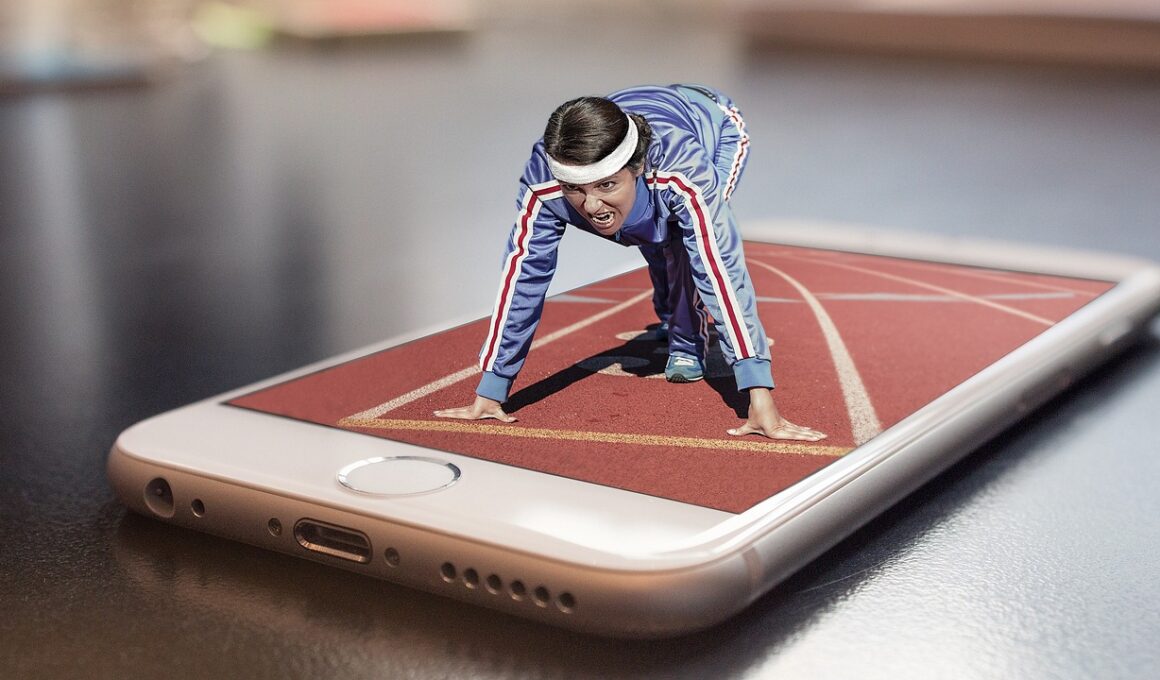Reviewing User Experiences: Top Marathon Training Apps
Marathon training apps have come a long way, providing invaluable tools for both novice and experienced runners. The quest for the perfect app often begins with defining personal goals, such as completing a marathon or improving personal bests. Many apps come equipped with features that help runners track their progress, allowing users to monitor distance, pace, and training schedules effectively. In recent years, features like GPS tracking and social integration have enhanced user experiences. Users can share their accomplishments with friends and join community challenges, fostering motivation. Apps such as Strava and RunKeeper provide a social aspect that appeals to many athletes. These platforms make it easy to share performance metrics on social media. Furthermore, paid subscriptions often unlock advanced features, including personalized coaching and advanced analytics. For users seeking a more structured training plan, apps like Nike Run Club incorporate guided runs led by professional trainers. Feedback from users highlights the importance of customizable training plans tailored to individual fitness levels and goals. This personalized approach has made marathon training apps indispensable in modern fitness journeys.
When examining user experiences, ease of use emerges as a significant factor. Marathon training apps must be intuitive, allowing users to navigate seamlessly through various features. A well-designed interface enhances accessibility for individuals of all tech-savviness levels. Apps that feature straightforward menus, clear icons, and easy-to-read statistics receive positive feedback. Users appreciate when tracking their runs does not require extensive set-up time, focusing instead on performance. Notably, users frequently commend MyFitnessPal for its user-friendly design and comprehensive integration with other fitness devices. The convenience of syncing data from wearables like smartwatches or heart rate monitors significantly boosts user satisfaction. Furthermore, regular updates and customer support play a vital role in overall user satisfaction. Successful apps often create forums and help centers where users can ask questions and resolve issues promptly. This support builds a community around the app, making users feel invested in it. Reviews often highlight how responsive customer service teams positively impact their experience. The blend of usability, support, and community engagement fosters loyalty and encourages regular use among runners aiming for marathon goals.
Features That Matter
The functionality of marathon training apps varies widely, which greatly contributes to user satisfaction. Essential features such as customizable training plans, a diverse range of workouts and embedded distance calculators are crucial. These functionalities cater to both recreational and serious runners, who may require specialized training regimens. Some apps offer audio-guided runs that motivate users while keeping them on track. Notably, integrations with online communities can enhance motivation as users engage in friendly competition or camaraderie. Users consistently praise applications like Garmin Connect and MapMyRun for their vast features. The treasure trove of analytics—comprising pace predictions, heart rate monitoring, and calories burned—makes it easier for users to optimize their performance. Furthermore, many users value health tracking features that allow them to maintain a holistic approach to training. Options that facilitate tracking hydration and nutrition alongside running metrics often receive positive feedback. Many users note how comprehensive analyses help them understand what works best for their training, translating to improved performance and results over time. Overall, varied and useful features keep users engaged while pushing them to reach their marathon training goals.
Mental preparation is just as pivotal as physical readiness in marathon training, and numerous apps stress this balance. Incorporating mindfulness and motivation into running programs can significantly enhance performance. Some applications include features that focus on mental training, offering guided meditations and affirmations. Runners using apps like Headspace or the mental training aspects of Runners Connect appreciate the links between proper mental preparation and achieving fitness goals. These features help runners build resilience, which is crucial during long-distance events. Many user reviews highlight how these aspects bolster their motivation during challenging training sessions. The intersection of mental and physical training promotes a holistic approach to marathon preparation. Balancing both aspects ensures participants enhance their running capabilities and enjoy more satisfying experiences during races. Additionally, applications that provide reminders, motivational tips, or personalized messages can positively influence a user’s mindset. Users often return to apps that foster a positive mental attitude, enhancing both their training and race experiences. This wellness-oriented approach is becoming increasingly popular among runners of every level. Heightening the focus on mental training can help individuals manage marathon stresses and elevate their racing performance significantly.
User Community and Engagement
Community engagement is essential to the success of marathon training apps, transforming them into platforms for collaboration and support. Users often turn to apps with integrated social features that allow them to interact with fellow runners. By fostering connections, these apps enable sharing of training insights, tips, and achievements, creating a sense of camaraderie. Platforms like Strava lead the way in community-building, encouraging users to join clubs and participate in virtual events. Regular challenges and monthly leaderboards increase user engagement, further promoting accountability within communities. Individuals motivated by peer support are more inclined to follow their training plans consistently. Positive interactions foster lasting connections and encourage users to share their improvement journeys. Many applications also host user-generated events or local meetups that amplify this sense of community. Additionally, forums and chat features promote discussion around various topics—including nutrition, race strategies, and injury prevention. Users frequently mention how supportive communities elevate their experiences and encourage a commitment to marathon training. This synthesis of technology and social interaction enhances the motivational aspect of training, ultimately driving users to put in the required effort to achieve their goals.
However, not all user experiences are positive. A common complaint regarding marathon training apps is the overwhelming amount of information and features. Some users feel inundated by too many analytics, causing them to disengage. A learning curve is often associated with advanced features, like heart rate analysis and pace variation, which can deter new users. Additionally, users frequently express frustration over inconsistent data syncing between devices or apps, highlighting the need for better integration among platforms. When new users encounter barriers that prevent initial engagement, they are less likely to stick with an app long-term. User reviews emphasize the importance of streamlined interfaces. Apps that prioritize simplicity while maintaining effectiveness often receive better ratings. Manufacturers should pay attention to feedback. Incremental improvements to their apps, based on user experiences, can address these issues. Ultimately, ensuring that apps remain accessible to novices while still providing depth for experienced athletes is essential for broad appeal. The varying experiences highlight the necessity of user-centered design that fosters engagement without overwhelming individuals.
Conclusion and Recommendations
In conclusion, marathon training apps offer diverse features that cater to various user needs, from novice runners to seasoned athletes. With app options such as Nike Run Club, Garmin Connect, and RunKeeper, users can find resources to optimize their training and connect with supportive communities. When choosing an app, consider factors such as usability, available features, integration with wearables, and community engagement. Individual preferences dictate which aspects carry more weight in the decision-making process. Strive for an app that combines effective training capabilities with features that resonate personally. Moreover, staying connected with community offerings can enhance overall experiences as you train. User feedback is instrumental to the ongoing success of these applications, driving developers to create more user-friendly interfaces. Continuous improvements in functionality can lead to increased satisfaction among users. As marathon training continues to evolve, embrace the resources available through these innovative apps. By utilizing the right app, runners can enhance their experience, stay motivated, and ultimately reach their running goals with sustained enthusiasm and commitment.



